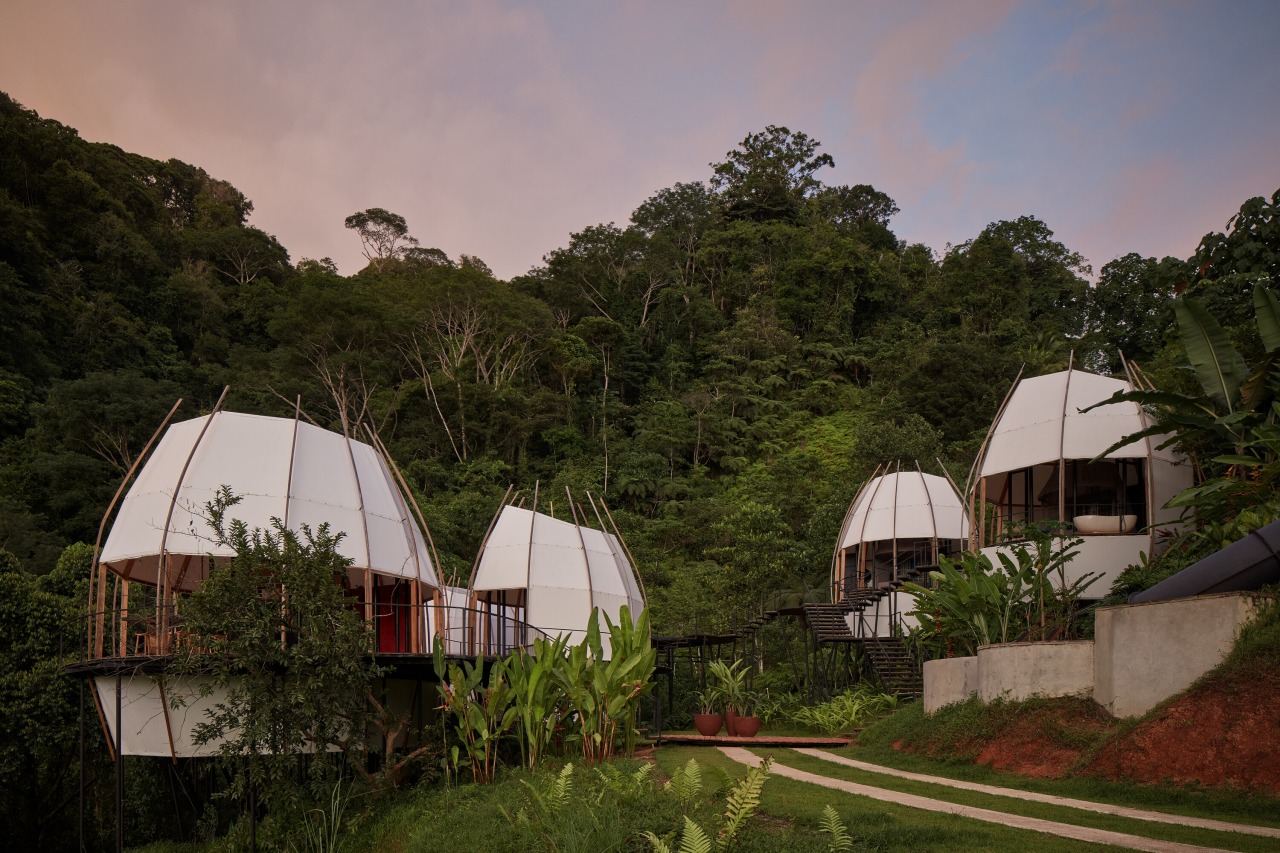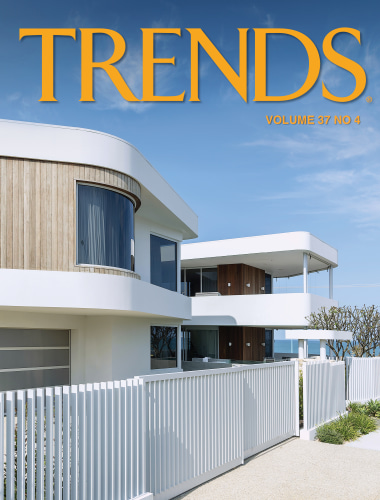Coco cabanas – raw jungle pods connect with the land
Fancy going bush, er make that going deep jungle? This surprising tourist offering lets you get up close and personal with the Costa Rican jungle thanks in large part to the innovative architecture
Coco pods designed by Archwerk.cz with interior design and wider resort cohesion by Studio Formafatal
From Archwerk:
Above Hermosa Beach, near the Costa Rican town Uvita, on a steep 2.5-hectare tropical jungle slope stands Art Villas resort. The resort is comprised of 3 villas styles – designed by 3 different architects with 3 different attitudes – together with a multifunctional tropical pavilion.
The most earthy of the three styles is the Coco Villa – a set of five egg shape retreats. These were designed by Archwerk.
Coco Villas are a unique example of playful glamping - sustainable and modern tropical architecture. When the owner/investor Filip Žák approached the architects, he wanted to create a place where visitors could merge with the surrounding nature, clear their mind and experience luxury and adventure at the same time. He wanted to create a place that digs deep into everyone's heart.
Archwerk's role:
Filip turned to us with an amazing challenge: to build a luxurious, but at the same time adventurous living options, bringing the experience of an immediate stay in the Costa Rican jungle.
Importantly, they were to be designed with simple solutions and local materials.
According to the investor's words, they should be "tree houses" placed on the hillside of the Art Villas resort, but in the freshly established garden without fully grown trees. And he asked for a design that no one had seen before.
We designed a nest of several shelters located on a fall overlooking the valley and named them Coco.
In our design, we used our experience from the completion of previous experimental design and build projects.
The main construction material is local tropical wood, complemented by a tent canvas and metal elements.
Rational construction is the basis of the design. It creates the form and atmosphere by itself, without needing any additional decoration.
The construction principle allows flexibility in the size, shape and composition of several similar objects in complicated terrain.
The outcome and experience
The pods are exposed to nature and the elements.
Rain only falls six months of the year in late afternoon cascades, and when a storm hits, it’s a dramatic and unforgettable experience.
Transparent and white shutters protect the interior from rain and wind while allowing daylight to penetrate.
Wedges of light and shadow filter through the big mosquito net that offers protection from wild jungle critters.
The same creative principle seen in Coco has been used by nature for millions of years. Nature inspires us to create an environment that we love and feel safe in.
Formafatal – interior design and wider resort cohesion
Studio Formafatal followed up on the work of architects from Archwek.cz and, together with client Filip Žák, finished the layout of the five Coco buildings built a few meters above the sloping terrain and absorbed by lush tropical vegetation.
Studio Formafatal has sensitively connected the individual buildings by footbridges and stairs made of wood and expanded metal, which are mounted on steel columns. The platforms serve as stopping points for views of the countryside, or you can even jump on a trampoline on one of the landings.
The footbridges and landings have minimalist shape and we intentionally designed them in clean lines, which are typical for other buildings in the resort.
Only the main terraces in the two height levels are based on the form of the Coco houses themselves, the shapes are soft and organic.
These terraces are set very close to the jungle and also offer views of the Pacific Ocean.
The interiors are minimalist and playful. You will not find anything unnecessary there, but at the same time nothing is missing.
The focal point of each Coco bedroom is a bed that sits on a raised part of the floor. The layout in each cabin is designed to take advantage of the most breathtaking views, where monkeys and toucans can be seen directly from the bed.
The mosquito net is intended to respect the shape of the building and is the dominant element of every bedroom.
The back of the beds are designed from welded wire mesh.
When I thought about a motif that would fit into Coco, it evoked in me the canopy tours, which are very popular in Costa Rica. These are trails and zip lines high above the ground in the treetops and Coco are also scattered a few metres above the ground.
That's why I used the motif of a climbing rope in the form of straps and coloured cords, which also brings a colour accent to the Coco interiors.
In each bedroom, a different colour is chosen, which is further reflected in the colour scheme of the dressing rooms.
In the largest Coco there is a shared kitchen with dining area.
The red cabinet wall in the colour of “mamón chinos (tropical fruit)” contains 2 refrigerators, 2 freezers and food cabinets.
The kitchen island serves for meal preparation and offers plenty of storage space for all dishes.
The dining table is a visual continuation of the island, as if it just tore off. This longitudinal axis is intentional and aims at a view of the Pacific Ocean.
The rest of the interior of the Coco kitchen is equipped with wicker furniture and locally made lighting.
Credit list
Architect – concept and architectural design
Landscape architect
Furniture
Designer – interior design, exterior finishing
Construction materials
Lighting
Home kitchen bathroom commercial design
From farmhouse to farmstead
Walk this way – garden pathways to lead your thinking
Objets central
Trends 37-04
There’s a variety of design creativity to inspire in this edition. A curvaceous seaside home features a pool with a diff...
Read More

















